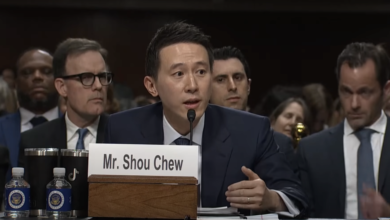On the heels of revelations about war crimes and massacres committed by the U.S. military in Iraq, including the grisly rape and murder of a 14-year-old Iraqi girl and the subsequent murder of her family, a recent report released by the Los Angeles Times details widespread atrocities committed by the U.S. military against the people of Vietnam, Laos and Cambodia during the 1960s and 70s.
The biggest war crime of all goes unmentioned in the report—the genocidal U.S. invasion, bombing and occupation of
|
Of south Vietnam’s 15,000 villages, two-thirds were destroyed by U.S. military action between 1965 and 1972. In the north, all six of the industrial cities and 4,000 of 5,800 agricultural communes were badly damaged. Twenty-one million gallons of Agent Orange herbicide was sprayed on the country, mostly in the south. This destroyed vast areas and caused a huge rise in birth defects and cancer.
Also unmentioned is the deadly, CIA-organized Phoenix Program, a clandestine war that assassinated as many 50,000 south Vietnamese who were considered to be members or sympathizers of the National Liberation Front. The vast repression and outright genocide committed by the U.S. military machine was still not enough to defeat the communist-led resistance of the Vietnamese people. The last U.S. soldier had to flee what was then Siagon (now Ho Chi Minh City) in April 1975.
Despite its glaring omissions, the Aug. 6 LA Times report is useful for its detail and candor. It resulted from a review of 9,000 pages in a once-secret government archive containing investigative files, sworn statements by witnesses to the crimes, and status reports for top military brass. They were compiled by a Pentagon task force—dubbed the “Vietnam War Crimes Working Group”—in the early 1970s. These documents were all declassified in 1994, but went largely unnoticed for over 10 years.
The “working group” that compiled the data in the 1970s was formed to review U.S. Army investigations and to give reports to the White House and military brass of all reported war crimes being committed in Vietnam. There were many.
In March 1968, the most infamous mass killing of Vietnamese civilians by U.S. forces happened in the village of My Lai. More than 500 people were brutally murdered, many after being tortured and humiliated. This prompted the formation of the “working group,” which was approved by the U.S. military commander in Vietnam, Gen. William Westmoreland.
The mission of the Pentagon group was not to determine how to prevent war crimes or to prosecute the criminals, but to give Westmoreland and Washington notice of war crimes allegations so they could have more time to deny them outright, cover them up, or manage internal fallout among the mostly working-class rank-and-file soldiers who were unhappy with the war and the daily atrocities they witnessed.
What’s in the archive sheds some light on the terrorizing and wanton killing of Vietnamese people by the U.S. military. But the archive’s records are far from complete. They were compiled by the Pentagon to serve the interests of imperialism, not to be a correct accounting or indictment of its horrendous crimes. As the people of Southeast Asia know all too well, the magnitude of U.S. war crimes in Vietnam was, in reality, far greater.
War crimes the norm, not the exception
The report reveals that Army investigators looked into and substantiated 320 war crimes committed by the U.S. military in the late 1960s and early 1970s. It did not include the My Lai massacre.
The LA Times notes that the “records describe recurrent attacks on ordinary Vietnamese—families in their homes, farmers in rice paddies, teenagers out fishing.” Hundreds of soldiers, in interviews with investigators and letters to commanders, described violent troops who “murdered, raped and tortured with impunity.”
Among the cases in the archive were seven massacres from 1967 through 1971 in which at least 137 civilians were
 |
For example, on March 16, 1968, the same day as the My Lai massacre, soldiers from the same division killed 80 to 90 civilians. Platoon leader Lt. Thomas K. Wilingham was charged with murder, but the charges were later dropped. No other suspects were pursued.
On May 18, 1971, a U.S. helicopter “hunter-killer” team attacked a village in Cambodia with rockets and machine-guns, killing eight civilians and wounding many more. The team then left the wounded without treatment and ransacked the village, stealing the victims’ personal property.
On Feb. 8, 1968, after rounding up 19 civilians in a Quang Nam province village, Army soldiers in the 4th Infantry Division were ordered by their commander to “kill anything that moves.” The soldiers complied. It was just days after the Tet Offensive was launched by the Vietnamese resistance.
According to eyewitness Jamie Henry, who was then a 20-year-old U.S. Army medic, the soldiers pulled a teenage woman who was naked from a hut and threw her to the ground on top of a pile of huddled Vietnamese civilians. The U.S. troops then opened fire with machine-guns, killing everyone.
Henry reported the incident once he returned to the United States, although Army legal officers told him to keep quiet. He held a press conference in 1970 denouncing the war and the massacre and joined Vietnam Veterans Against the War.
No one was ever charged in the Feb. 8, 1968, massacre.
Thousands more unreported
In addition to the 320 cases “substantiated” by army investigators, hundreds of reported atrocities were left uninvestigated. The archive contains material related to more than 500 war crimes that were discounted by the U.S. military. Thousands more war crimes that were committed are not mentioned in the archive at all.
Of those that are mentioned, but were not investigated, one anonymous sergeant wrote a letter to Westmoreland in 1970 describing the mass killing of civilians by members of the Army’s 9th Infantry Division in the Mekong Delta. The letter blamed the killings, in part, on pressure from superior officers to generate high body counts.
The letter reads: “‘A battalion [sic] would kill maybe 15 to 20 [civilians] a day. With 4 batalions in the brigade that would be maybe 40 to 50 a day or 1,200 to 1,500 a month, easy. If I am only 10% right, and believe me it’s lots more, then I am trying to tell you about 120-150 murders, or a My Lay [sic] each month for over a year.’”
The U.S. Army never acted on the letter, although internally they determined that it was “sincere” and “forceful.” The military brass only wanted to make sure that the push for verifiable body counts did not “‘encourage the human tendency to inflate the count by violating established rules of engagement.’” They also wanted to find the letter’s author to prevent his complaints from reaching politicians or the public.
Killing with impunity
Despite the relatively small scope of the investigations in the archive, the records show that investigators determined that evidence against 203 soldiers accused of war crimes was strong enough to warrant formal charges. As usually happens in “internal” prosecutions, very little happened. Only 57 of the 203 ultimately were court-martialed and just 23 convicted.
Fourteen of the convicted got prison sentences ranging from six months to 20 years, but nearly all sentences were
|
Most of the war criminals just received a letter of reprimand. The U.S. Army did little to prosecute anyone for known atrocities. And once the war was over in 1975 after the Vietnamese victory, all pending war crimes cases and investigations were dropped completely.
The few soldiers punished for Vietnam war atrocities were rank-and-file troops. The true war criminals—those sitting in the White House and the Pentagon—were never charged or punished for their crimes.
Vietnam then, Iraq now
More than 30 years after the end of the Vietnam war, the bourgeois press is paying attention to some of the massive war crimes committed by the U.S. military in Vietnam. The capitalist media wasn’t covering U.S. atrocities in any meaningful way during the war.
Now, with increasing regularity, the media is reporting on U.S. war crimes in occupied Iraq. But the leopard hasn’t changed its spots. Although we hear of some, we should know that the capitalist media won’t cover the true extent of massacres and atrocities committed in Iraq by the U.S. imperialist army and its allies.
The ones that have been uncovered are awful enough. First, the torture and killing of prisoners at Abu Ghraib. More recently, U.S. marines massacred 24 civilians, mostly women and children, in Haditha and then covered up their crimes. And now the world knows about the terrible rape and murder of Abeer Qassim al-Janabi, a 14-year-old Iraqi girl. U.S. soldiers not only murdered her, but also her mother, father and five-year-old sister. Military hearings currently are underway to determine if the five U.S. soldiers involved should be court-martialed.
These heinous crimes are only the tip of the iceberg. When the media reports these incidents in isolation, the implication is that something unusual happened when the atrocities were committed by the U.S. military.
That is pure fiction. Massacres, killings, torture and humiliation at the hands of the occupying imperialist army is the norm. These things are happening to Iraqis every day.
The war crimes that make it into the media spotlight will be “investigated” by the Pentagon, just as they were during the Vietnam war and the Korean war before it. But no matter what the “investigations” turn up or who is convicted as a result, they will never reveal the truth—that the mass killing and torture of an occupied people is an official U.S. war policy.
The logic behind war crimes
There was a military rationale for killing the civilians in Vietnam. The U.S. soldiers could not tell whether the civilians were sympathetic to the Vietnamese communists or whether they would permit Viet Minh or National Liberation Front soldiers into their midst.
The Geneva Conventions expressly prohibit the targeting of civilians under any circumstances. But the Pentagon had a
|
The fundamental fear of the Pentagon and the White House in Vietnam, as before in Korea, and during the first and the current war against Iraq, was that public opinion at home would turn against the imperialist adventure and tie the hands of the war makers. The logic of their political calculus was that U.S. public opinion would turn against the war if large numbers of U.S. soldiers died.
This thought took them to the next murderous conclusion: If civilians pose even a remote risk to U.S. soldiers, it is better to shoot the civilians first and ask questions later. Dead Korean or Vietnamese or Iraqi civilians will not be as politically damaging back home as dead U.S. soldiers.
There is one more side to the logic of war crimes. If the civilian population is sympathetic to the resistance fighters, it is necessary to terrorize the civilians as punishment for providing aid or shelter to a guerrilla army. The U.S. military imbues soldiers with racism against the occupied civilian population to facilitate this goal.
Terrorizing civilians is not a new story. The Japanese wiped out whole villages and most of some cities in China as a warning against aiding the communist-led resistance during World War II. The Nazis’ policy in Serbia was to kill 100 Serbs for every German soldier killed by the resistance. And under the direction of John Negroponte, current director of U.S. intelligence services, the Salvadoran military carried out large-scale massacres of peasant communities that were considered supportive of FMLN resistance fighters in El Salvador during the 1980s. The list goes on and on.
The recent report on war crimes in Vietnam coupled with the disclosure of more atrocities against Iraqi civilians are opportunities for anti-imperialist forces to reflect on history and bring the realities of U.S. occupation to broader layers of the working class. Let’s use these opportunities to build real solidarity with the Iraqi people, who—like the Vietnamese before them—are fighting heroically to rid their country of imperialist occupation and domination.








